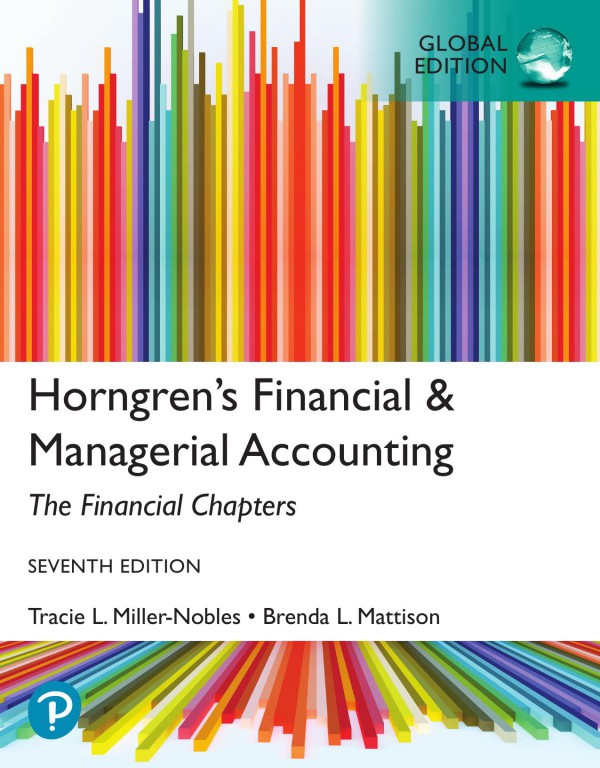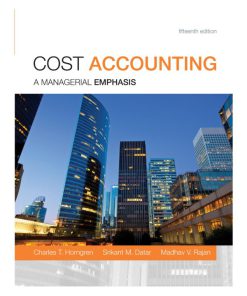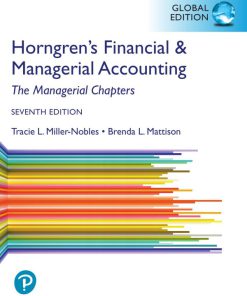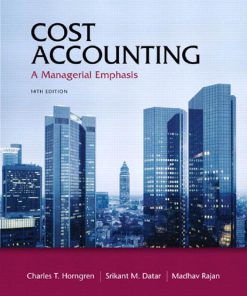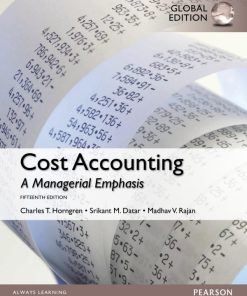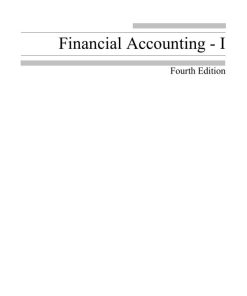Horngren Financial and Managerial Accounting The Financial Chapters 7th Edition by Tracie Miller Nobles, Brenda Mattison ISBN 9781292420820
$50.00 Original price was: $50.00.$25.00Current price is: $25.00.
Authors:Miller-Nobles, Tracie , Series:Management [858] , Author sort:Miller-Nobles, Tracie , Languages:Languages:eng , Published:Published:Jun 2021 , Publisher:Pearson
Horngren Financial and Managerial Accounting The Financial Chapters 7th Edition by Tracie Miller Nobles, Brenda Mattison – Ebook PDF Instant Download/Delivery. 9781292420820
Full download Horngren Financial and Managerial Accounting The Financial Chapters 7th Edition after payment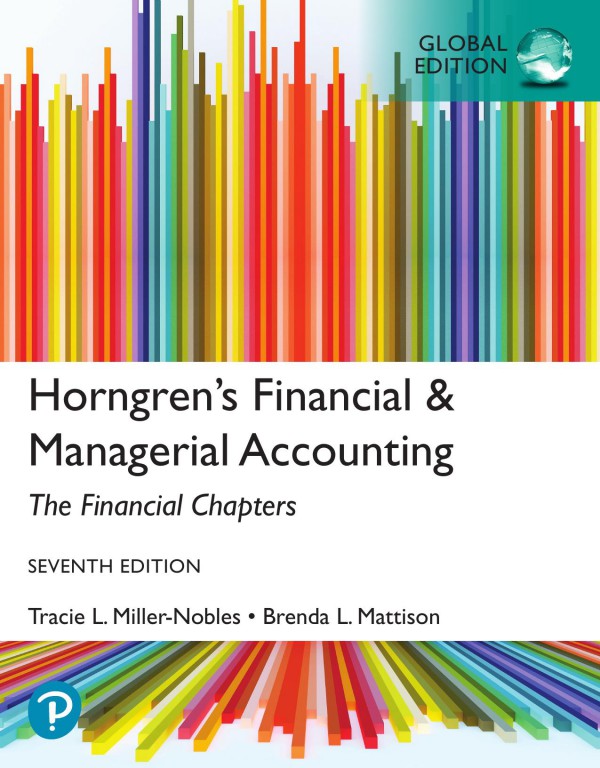
Product details:
ISBN 10:
ISBN 13: 9781292420820
Author: Tracie Miller Nobles, Brenda Mattison
Expanding on proven success with Horngren’s accounting Horngren’s Financial and Managerial Accounting, The Financial Chapters presents the core content of principles of accounting courses in a fresh format designed to help today’s learners succeed. As teachers first, the author team knows the importance of delivering a student experience free of obstacles. Their pedagogy and content uses leading methods in teaching students critical foundational and emerging topics(e.g., data analytics and employability skills) in the field of accounting, and concentrates on improving student results — all tested in class by the authors themselves. With this in mind, the 7th Edition continues to focus on readability and student comprehension and takes this a step further by employing a new theme to help students see how accounting is used as a tool to help all business people make decisions. By providing more meaningful learning tools, this title gives professors the resources needed to help students clear hurdles inside and outside of the classroom, like never before.
Horngren Financial and Managerial Accounting The Financial Chapters 7th Edition Table of contents:
Chapter 1: Introduction to Financial Accounting
- The Role of Accounting
- The Accounting Cycle
- Financial Statements: Income Statement, Balance Sheet, and Statement of Cash Flows
- Users of Accounting Information
- The Fundamental Accounting Equation
Chapter 2: Analyzing and Recording Transactions
- The Double-Entry System
- Recording Transactions in Journals
- Posting to Ledger Accounts
- Trial Balance and Error Correction
- The Impact of Transactions on Financial Statements
Chapter 3: The Adjusting Process
- Importance of Adjusting Entries
- Types of Adjusting Entries: Prepaid Expenses, Accrued Revenues, Accrued Expenses, and Unearned Revenues
- Preparing Adjusting Entries
- Preparing Financial Statements after Adjustments
Chapter 4: Completing the Accounting Cycle
- The Closing Process
- Preparing the Post-Closing Trial Balance
- Preparing the Income Statement, Statement of Retained Earnings, and Balance Sheet
- The Accounting Cycle Summary
Chapter 5: Accounting for Merchandising Operations
- The Nature of Merchandising Companies
- Sales and Cost of Goods Sold
- Journal Entries for Sales and Purchases
- Inventory Systems: Perpetual vs. Periodic
- Gross Profit and Operating Expenses
Chapter 6: Accounting for Receivables
- Types of Receivables: Accounts Receivable, Notes Receivable
- Recognizing Accounts Receivable
- Bad Debts and Allowance for Doubtful Accounts
- Methods for Estimating Bad Debts: Direct Write-Off and Allowance Methods
- Managing Receivables and Collecting Cash
Chapter 7: Accounting for Inventories
- Inventory Systems: Perpetual and Periodic
- Inventory Valuation Methods: FIFO, LIFO, and Weighted Average
- Impact of Inventory Methods on Financial Statements
- Lower of Cost or Market Rule
- Evaluating Inventory and Measuring Inventory Turnover
Chapter 8: Accounting for Long-Term Assets
- Types of Long-Term Assets: Property, Plant, and Equipment
- Capitalizing vs. Expensing Costs
- Depreciation Methods: Straight-Line, Declining Balance, Units-of-Production
- Impairments and Disposals of Long-Term Assets
- Accounting for Intangible Assets
Chapter 9: Accounting for Liabilities
- Current vs. Long-Term Liabilities
- Recognizing and Measuring Liabilities
- Notes Payable, Accounts Payable, and Accrued Liabilities
- Contingent Liabilities
- Bonds Payable and the Bond Pricing Process
Chapter 10: Accounting for Stockholders’ Equity
- Components of Stockholders’ Equity
- Common and Preferred Stock
- Issuing and Repurchasing Stock
- Dividends and Stock Splits
- Retained Earnings and Treasury Stock
Chapter 11: Statement of Cash Flows
- Importance of the Statement of Cash Flows
- Cash Flow Categories: Operating, Investing, and Financing Activities
- Direct vs. Indirect Methods of Cash Flow Presentation
- Preparing the Statement of Cash Flows
- Cash Flow Analysis and Interpretation
Chapter 12: Financial Statement Analysis
- The Role of Financial Statement Analysis
- Ratio Analysis: Profitability, Liquidity, and Solvency Ratios
- Trend Analysis and Horizontal Analysis
- Vertical Analysis and Common-Size Financial Statements
- Interpreting Financial Ratios and Comparisons
People also search for Horngren Financial and Managerial Accounting The Financial Chapters 7th Edition:
horngren’s financial & managerial accounting pdf
horngren’s financial & managerial accounting 6th edition
horngren’s financial & managerial accounting 7e
horngren’s financial & managerial accounting the managerial chapters 7th edition

